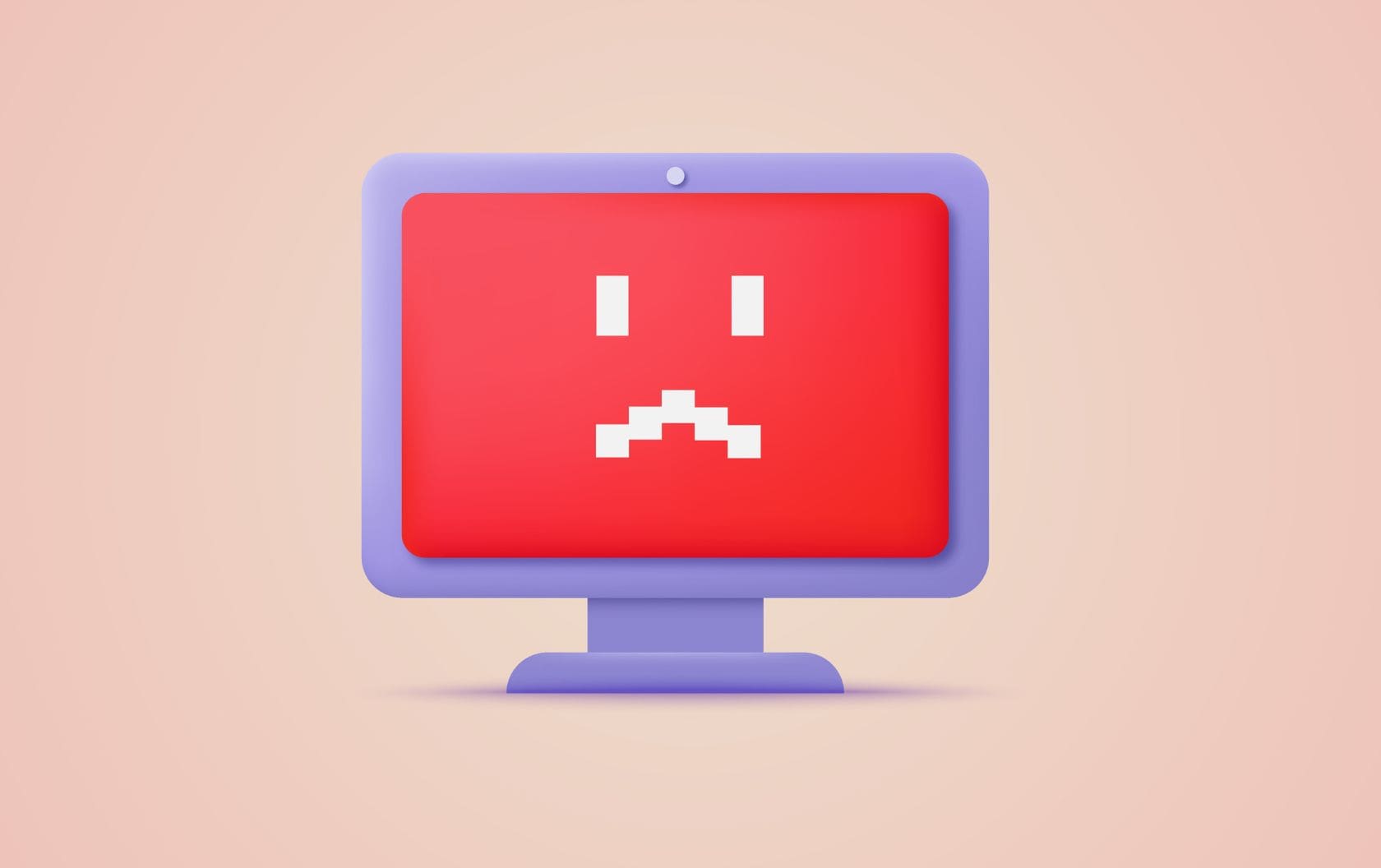Don't Waste Your Money: 4 Website Mistakes You Can't Afford To Make
by Will Williamson on 14-Sep-2023 13:00:00

In the online economy, your website is probably the most expensive digital asset you will need to invest in. According to Forbes, the setup costs for a modest small business website in 2023 can range from £1600-£7200, while an Ecommerce site could set a business back £4000-£44,000. Clearly, the difference in price between the lower and higher end of the scale is enormous and will be affected by factors such as the number of pages, the design elements you need, inbuilt applications and security features, and the fees charged by your designer.
Website design and maintenance costs have gone down on average as technology has improved, making high-performance websites accessible and achievable for smaller businesses on a tighter budget. Nevertheless, it is important to have a clear understanding of the costs associated with building and managing a business website so that you don’t waste your money or end up paying more than you need to.
These are the four main website costing mistakes that small businesses can’t afford to make.
Mistake 1: Trying To Do Too Much In-House
The examples drawn from the Forbes article assume that the website owner outsources all elements of website creation to one or more third parties, from design and layout to content creation. In reality, most SMEs try to save costs by starting with a shoestring budget and keeping as many elements of web development in-house as possible, before outsourcing some of the managerial and marketing aspects of their business website to a third party at a later date.
The bad news is that this DIY approach can often cost a business more than it saves. Unless you already have an experienced web design, programming, and content creation team in-house that knows what they are doing, a homegrown website will always fall short of the quality of a professionally created one. It will also usually take longer to develop, be more prone to implementation issues and glitches, and may lack important features such as mobile optimisation and scalability. Many SMEs actually save money long-term by taking the reverse approach of investing more in professional services to begin with, before taking on more direct responsibility for the site as and when their in-house resources grow.
Mistake 2: Building A Website Without Considering Future Expansion
A business website isn’t simply for where your business is now but for where it will be tomorrow. A common money-wasting mistake is, therefore, to build a business website around a low-cost website template with limited scope for future expansion. Many off-the-shelf website templates simply lack in terms of functionality, customisation, and responsiveness to emerging technologies. As your business grows, you’ll invariably want to add new pages, features, and capabilities to meet the evolving needs of your audience, which can be expensive unless scalability is built into your website from the outset. Investing in a well-designed professional site from the beginning can save you significant time, money, and frustration later on.
Mistake 3: Not Accounting For Website Maintenance And Update Costs
As a website owner, your expenses don’t end on the day your site goes live. You’ll also have annual ongoing maintenance and update costs that may run into the hundreds or thousands of pounds per year. These on-costs include:
- SSL (secure socket layer) Certification costs – An essential security measure to protect your visitors and customers from cyber-attacks.
- Web hosting fees
- Domain registration fees
- Web design fees for new pages and updates
- SaaS website builder subscription costs
- Content creation – e.g., for your business blog, landing pages, incentive content etc
- Graphic design and photography
- Add-ons, plugins, and website applications
- Marketing and promotion
Regular website maintenance is also important to sustain a functional site. This includes updating your plugins, themes, and content management systems, as well as fixing bugs and broken links. Neglecting these aspects can decrease the performance of your site, compromise your data security, and deliver a lacklustre user experience. A big mistake is to underestimate these costs so that there isn’t enough budget available for important tasks such as search engine optimisation or content updates.
Mistake 4: Not Investing In Adequate Website Security Matters
Given the devastating impact that a cyber-attack can have on your business and its customers, both in terms of financial losses and reputational damage, it is essential for SMEs to invest adequate budget into robust security measures at the design stage and long term. These measures encompass regular software updates, a high-quality SSL certificate, and strong password protocols. Ignoring these safety provisions or underfunding them can result in damaging data breaches, website downtime, and a loss of trust and credibility in your business.
Next Steps
At JDR Group, we offer an end-to-end, sales-focused web development solution that includes all the services you need to maintain and promote your website throughout its life-cycle, including:
- Modern, mobile-responsive web design
- Business UX and UI optimised for lead generation
- Secure and affordable web hosting
- Professional web content and blog article writing
- Visual graphics and video design
- Regular updates and maintenance
- Marketing, SEO, and sales support
- Full integration with HubSpot
- Ongoing expert web consultancy
By choosing JDR Group as your business website partner, you’ll save money compared to using multiple third parties and gain better control and transparency over your budget, with less risk of making wasteful mistakes. For more information, please contact our website team today.
Image Source: Canva
- Inbound Marketing (SEO, PPC, Social Media, Video) (819)
- Strategy (360)
- Sales & CRM (191)
- Marketing Automation & Email Marketing (190)
- Business Growth (161)
- Website Design (160)
- Hubspot (136)
- Lead Generation (113)
- Google Adwords (98)
- Content Marketing (94)
- Case Studies (47)
- News (47)
- Conversion (44)
- Ecommerce (38)
- Webinars (33)
- SEO (24)
- AI (19)
- Events (19)
- Video (17)
- LinkedIn Advertising (15)
- Video Selling (15)
- Software training (13)
- Niche business marketing (11)
- The Digital Prosperity Podcast (10)
- Facebook Advertising (6)
- HubSpot Case Studies (5)
- November 2025 (6)
- October 2025 (17)
- September 2025 (16)
- August 2025 (14)
- July 2025 (14)
- June 2025 (5)
- May 2025 (19)
- April 2025 (15)
- March 2025 (13)
- February 2025 (13)
- January 2025 (8)
- December 2024 (2)
- November 2024 (4)
- October 2024 (21)
- September 2024 (4)
- August 2024 (8)
- July 2024 (14)
- June 2024 (16)
- May 2024 (25)
- April 2024 (15)
- March 2024 (18)
- February 2024 (5)
- January 2024 (10)
- December 2023 (6)
- November 2023 (10)
- October 2023 (13)
- September 2023 (12)
- August 2023 (14)
- July 2023 (13)
- June 2023 (14)
- May 2023 (15)
- April 2023 (13)
- March 2023 (14)
- February 2023 (13)
- January 2023 (15)
- December 2022 (13)
- November 2022 (6)
- October 2022 (8)
- September 2022 (22)
- August 2022 (15)
- July 2022 (13)
- June 2022 (16)
- May 2022 (14)
- April 2022 (16)
- March 2022 (17)
- February 2022 (11)
- January 2022 (8)
- December 2021 (6)
- November 2021 (7)
- October 2021 (11)
- September 2021 (10)
- August 2021 (7)
- July 2021 (7)
- June 2021 (4)
- May 2021 (4)
- April 2021 (1)
- March 2021 (3)
- February 2021 (5)
- January 2021 (4)
- December 2020 (7)
- November 2020 (6)
- October 2020 (5)
- September 2020 (9)
- August 2020 (18)
- July 2020 (17)
- June 2020 (17)
- May 2020 (10)
- April 2020 (21)
- March 2020 (24)
- February 2020 (21)
- January 2020 (12)
- December 2019 (23)
- November 2019 (12)
- October 2019 (14)
- September 2019 (16)
- August 2019 (15)
- July 2019 (13)
- June 2019 (6)
- May 2019 (8)
- April 2019 (4)
- March 2019 (2)
- February 2019 (2)
- January 2019 (2)
- December 2018 (3)
- November 2018 (24)
- September 2018 (11)
- August 2018 (9)
- June 2018 (3)
- May 2018 (6)
- April 2018 (14)
- March 2018 (12)
- February 2018 (16)
- January 2018 (15)
- December 2017 (15)
- November 2017 (18)
- October 2017 (23)
- September 2017 (19)
- August 2017 (28)
- July 2017 (27)
- June 2017 (25)
- May 2017 (18)
- April 2017 (17)
- March 2017 (16)
- February 2017 (17)
- January 2017 (14)
- December 2016 (21)
- November 2016 (27)
- October 2016 (25)
- September 2016 (16)
- August 2016 (20)
- July 2016 (19)
- June 2016 (14)
- May 2016 (20)
- April 2016 (24)
- March 2016 (22)
- February 2016 (28)
- January 2016 (27)
- December 2015 (28)
- November 2015 (19)
- October 2015 (9)
- September 2015 (12)
- August 2015 (5)
- July 2015 (1)
- June 2015 (10)
- May 2015 (3)
- April 2015 (11)
- March 2015 (14)
- February 2015 (15)
- January 2015 (12)
- December 2014 (2)
- November 2014 (23)
- October 2014 (2)
- September 2014 (2)
- August 2014 (2)
- July 2014 (2)
- June 2014 (7)
- May 2014 (14)
- April 2014 (14)
- March 2014 (7)
- February 2014 (2)
- January 2014 (7)
- December 2013 (9)
- November 2013 (14)
- October 2013 (17)
- September 2013 (3)
- August 2013 (6)
- July 2013 (8)
- June 2013 (4)
- May 2013 (3)
- April 2013 (6)
- March 2013 (6)
- February 2013 (7)
- January 2013 (5)
- December 2012 (3)
- November 2012 (2)
- September 2012 (1)
Subscribe by email
You May Also Like
These Related Blogs

SME Business Growth Challenges With Inbound Marketing And How To Effectively Tackle Them
The growth challenges faced by many SMEs can be overcome through implementing an effective inbound marketing strategy.

The Importance Of SEO In The Modern, Digital World
What comes next after launching a website? We frequently get this question from business owners who wish to build their online presence. The answer to …

How To Make Your Website Mobile Friendly
If you're wondering how to make your website mobile friendly, you're not alone. With more people than ever before accessing the web from a mobile devi …




